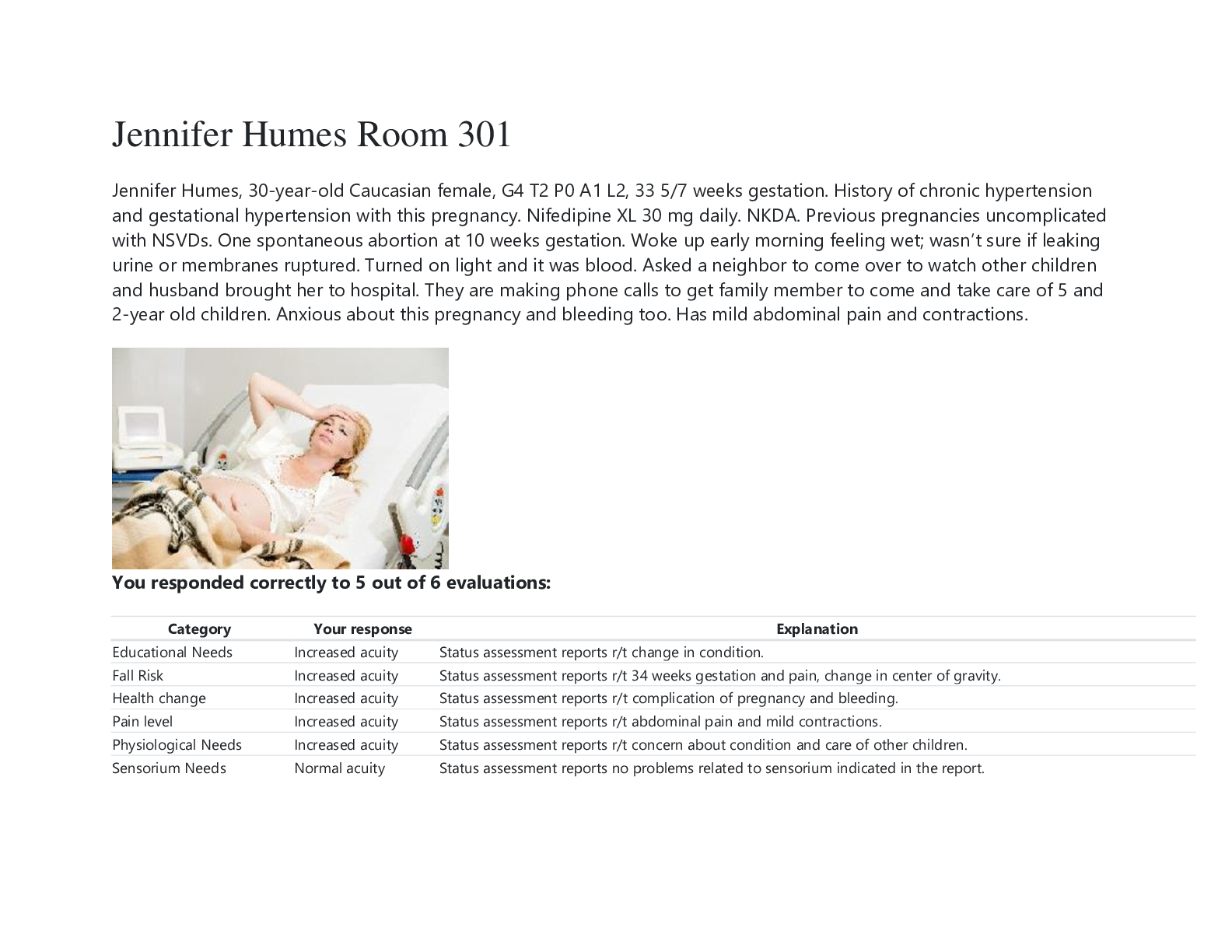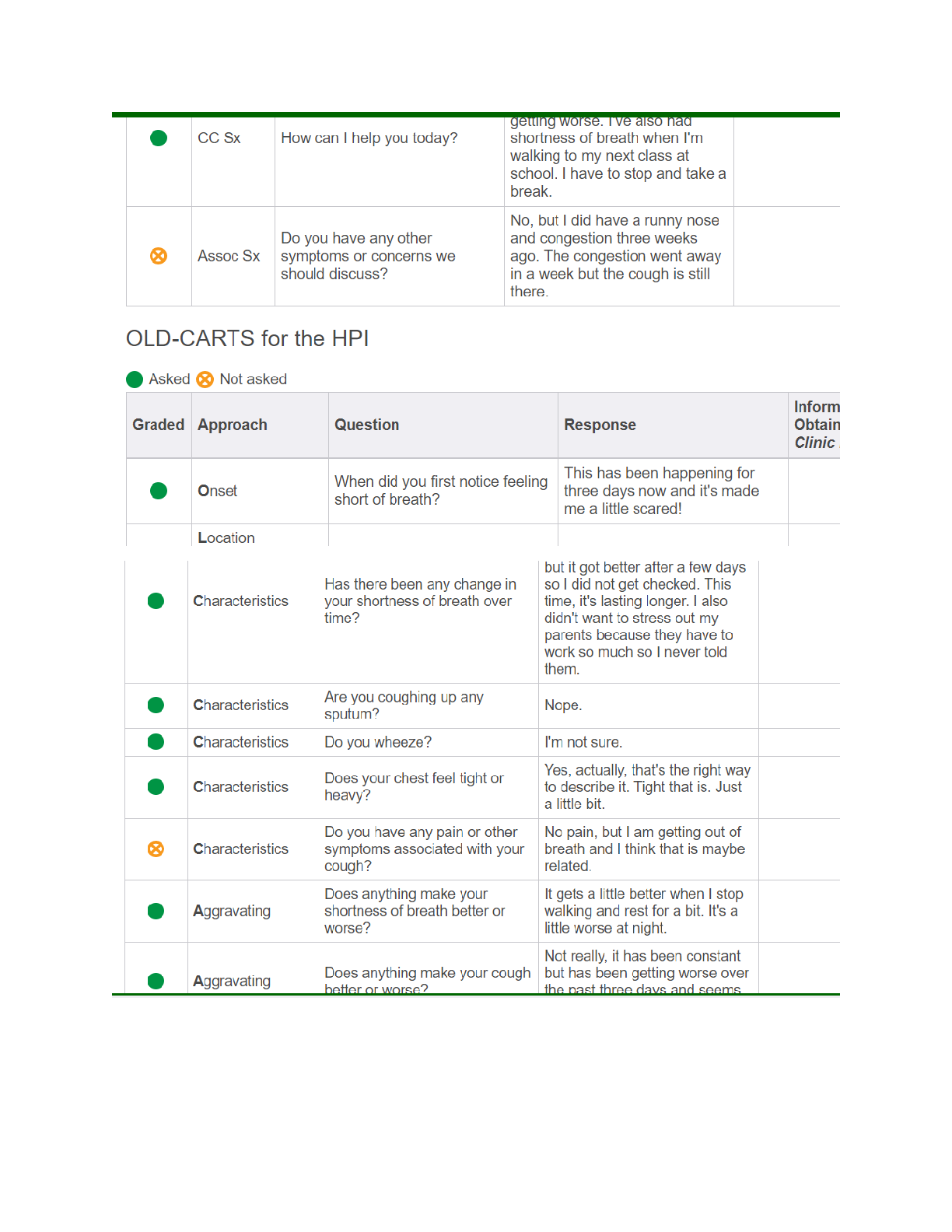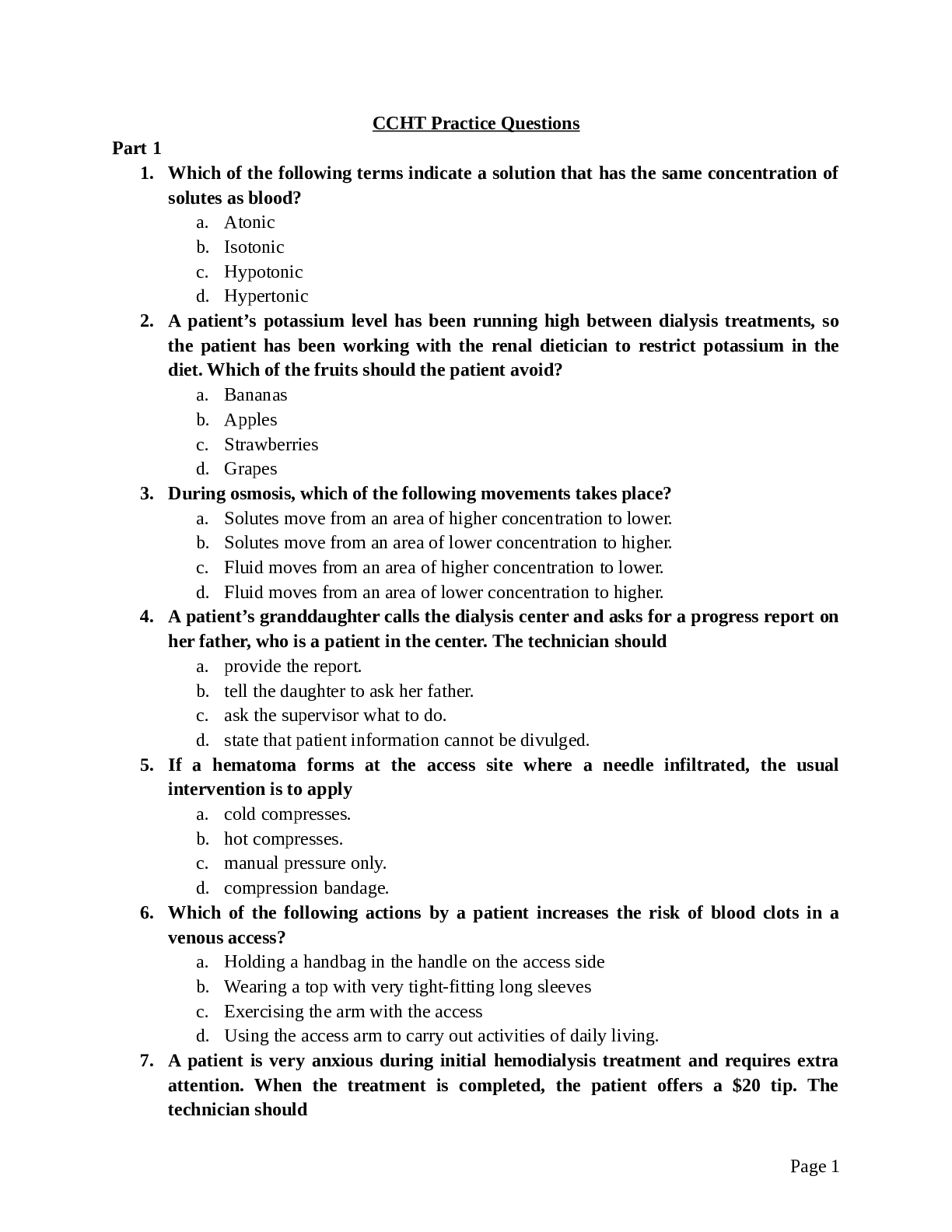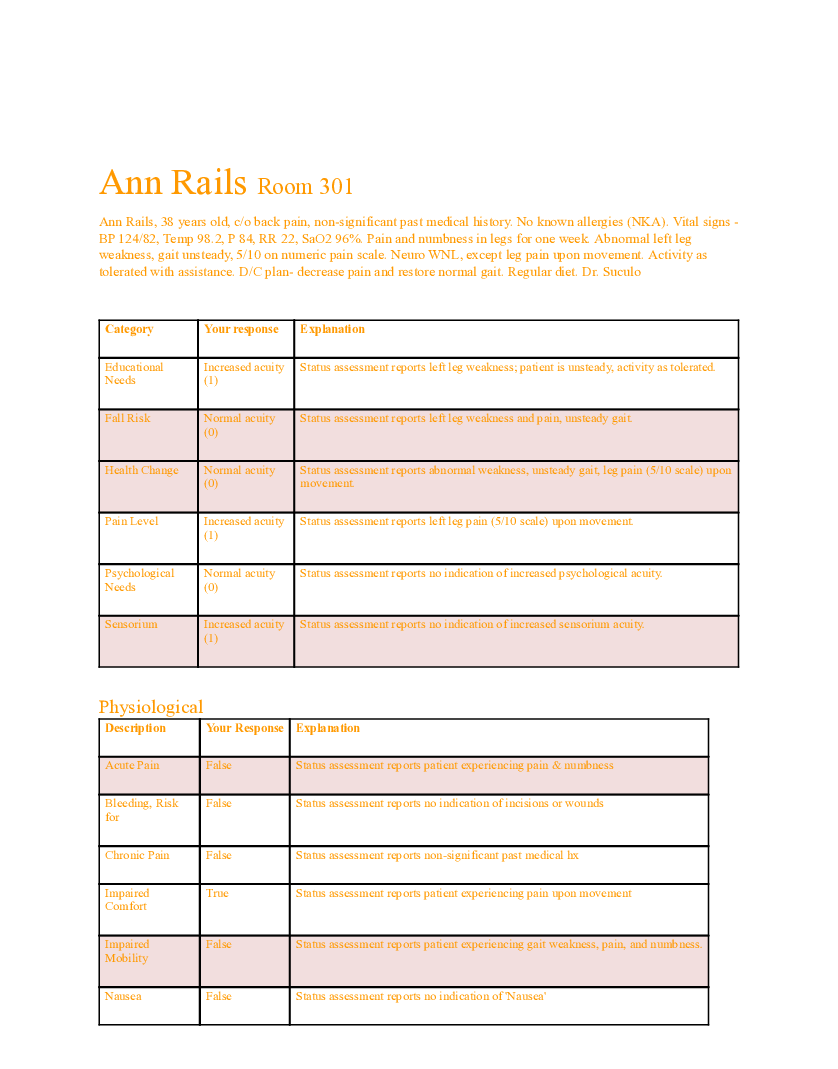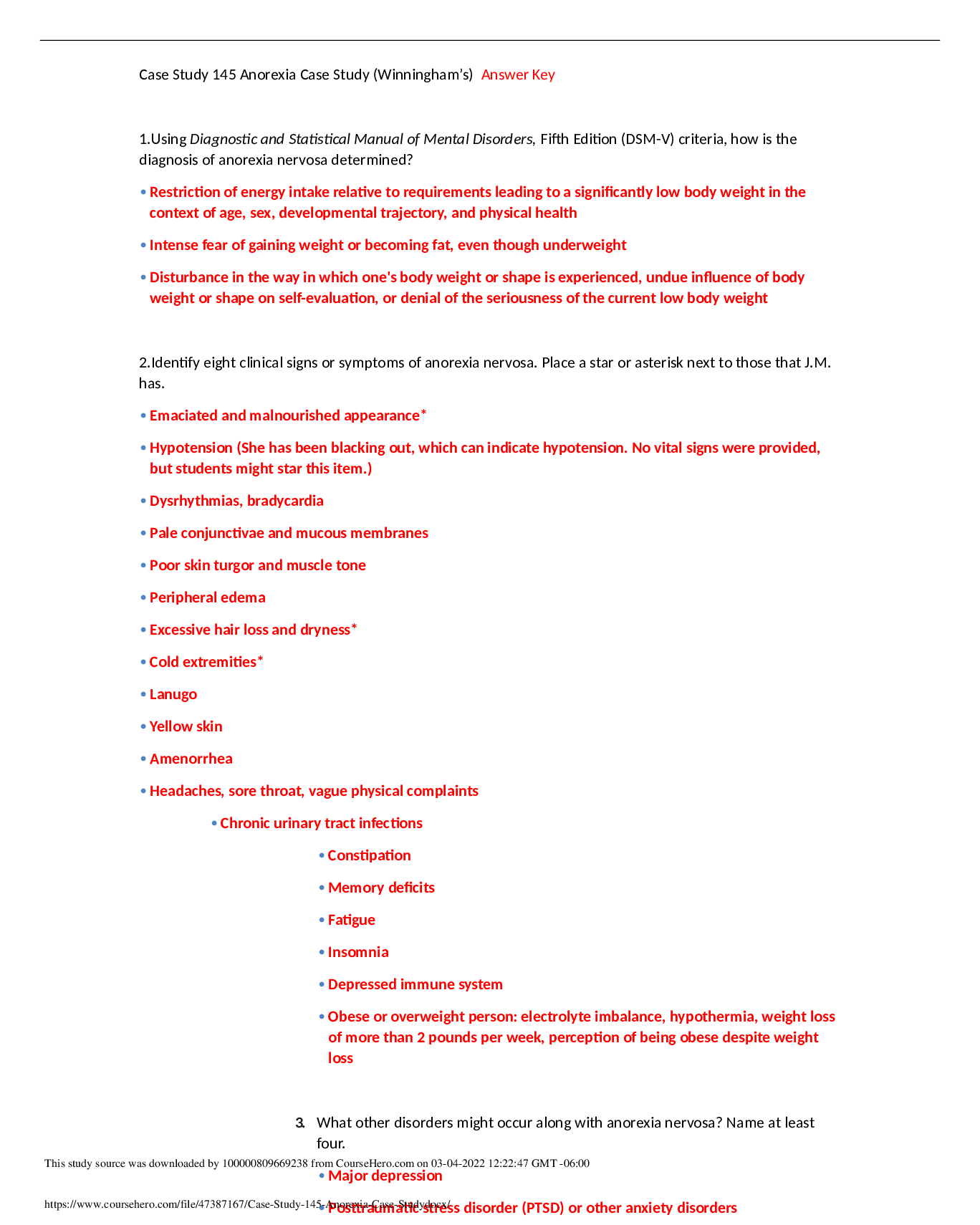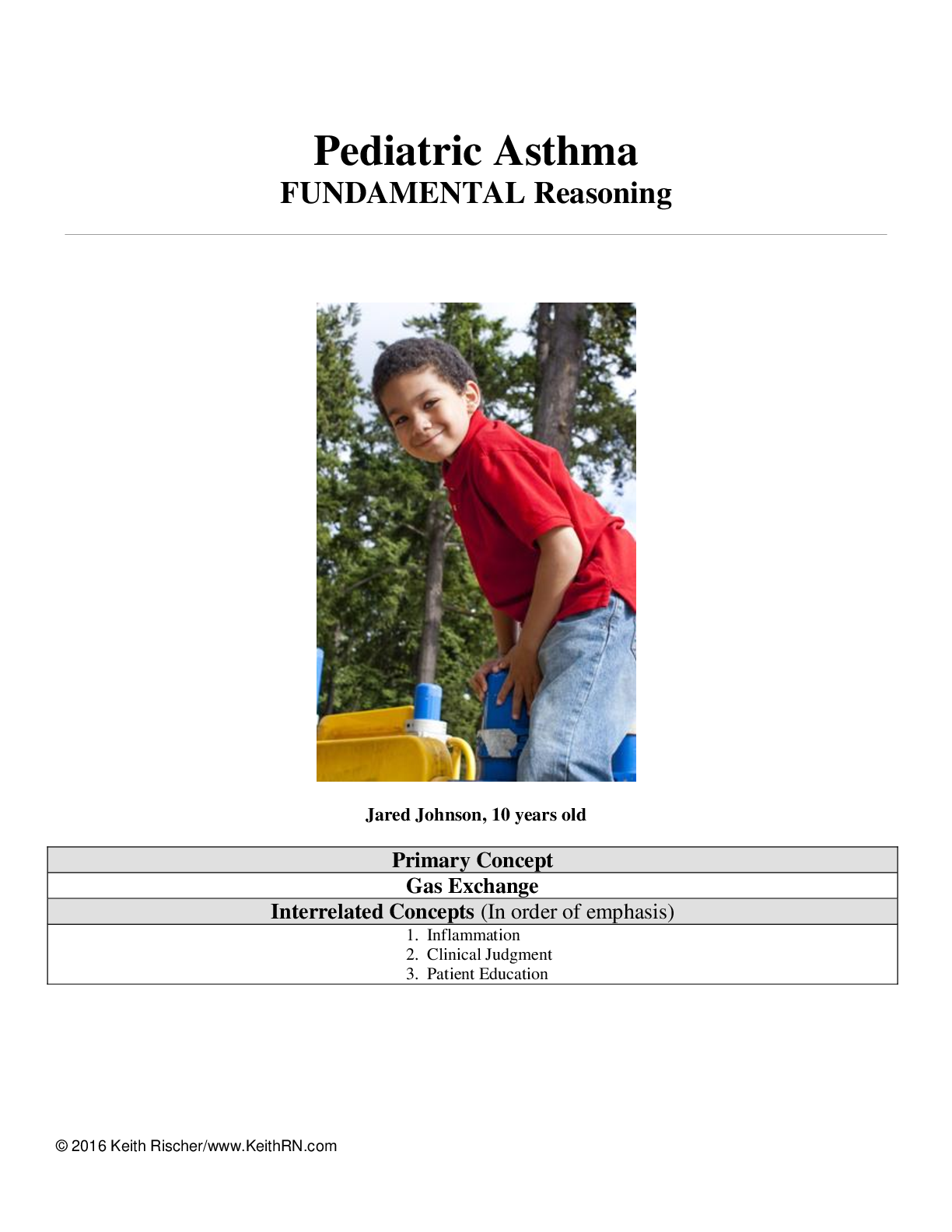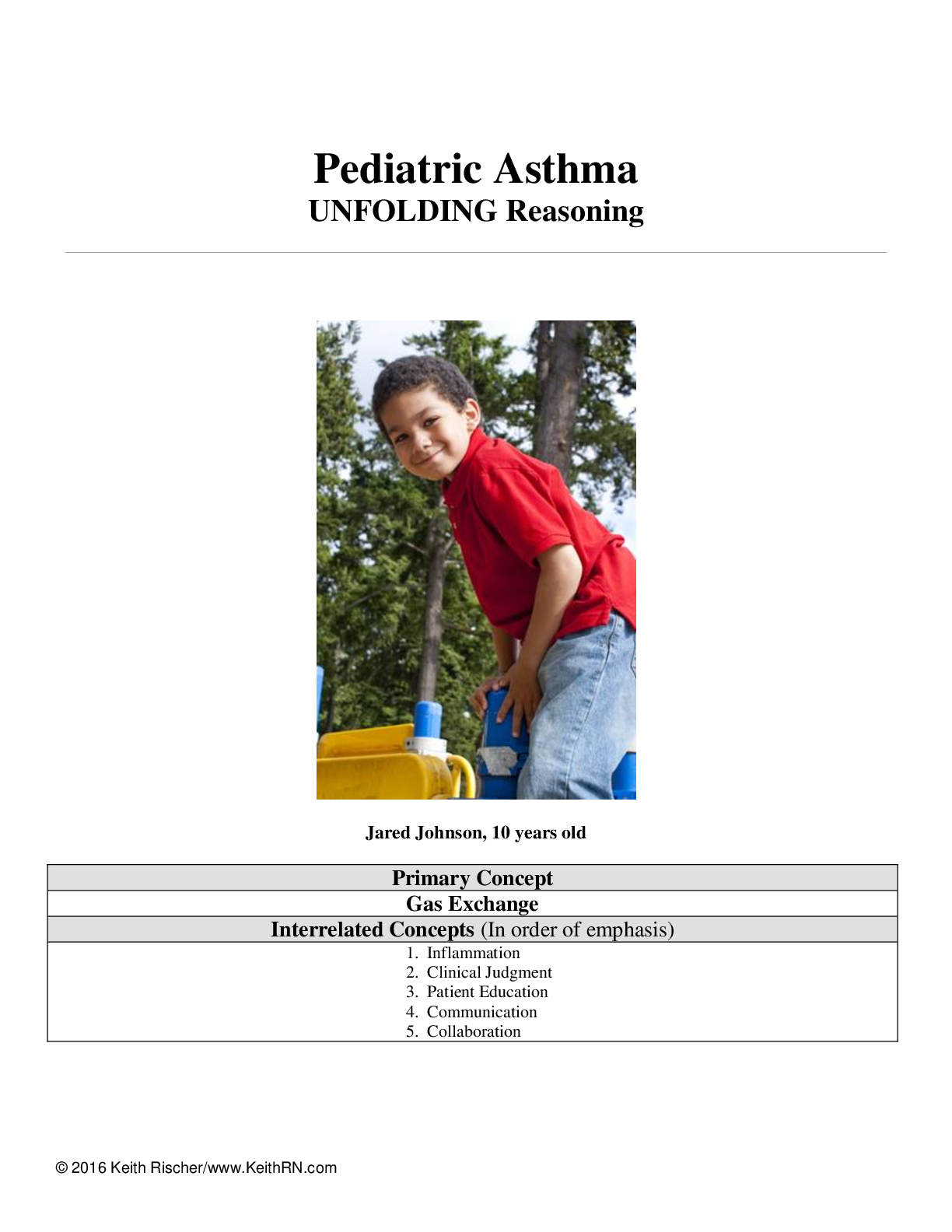*NURSING > CASE STUDY > Jared Pediatric Asthma LATEST | NUR 275 Pediatric Asthma_Graded A (All)
Jared Pediatric Asthma LATEST | NUR 275 Pediatric Asthma_Graded A
Document Content and Description Below
Pediatric Asthma Jared, 10 years old Overview This scenario is a rich application of the priority setting required by the nurse to rescue a child with an acute asthmatic exacerbation. Please make sure... your answers are peds appropriate. Concepts (in order of emphasis) I. Gas Exchange II. Inflammation III. Clinical Judgment IV. Communication V. CollaborationPediatric Asthma I. Clinical Relevance/Significance History of Present Problem: Jared is a 10 year-old African-American boy with a history of moderate persistent asthma. He is being admitted to the pediatric unit of the hospital from the walk-in clinic with an acute asthma exacerbation. Jared started complaining of increased chest tightness and shortness of breath one day prior to admission. He has been at 50% of his personal best measurement for his peak expiratory flow (PEF) meter reading which did not improve with the use of albuterol metered dose inhaler (MDI) (per his written asthma management plan). In the walk-in clinic Jared is alert, speaking in short sentences due to breathlessness at rest. He has coarse expiratory wheezes throughout both lung fields with decreased breath sounds at the right base. His oxygen saturation on room air is 90%. His color is pale and he has dark circles under his eyes. He is sitting upright and using his accessory chest muscles to breath and has moderate intercostal and substernal retractions. He is complaining of tightness in his chest. Jared was diagnosed with asthma at age 6 years and has 3 prior hospitalizations for asthma with one admission to the pediatric intensive care unit. He has never had to be intubated with these episodes. Personal/Social History: He is accompanied by his mother and 16-year-old sister. Jared lives with his mother, maternal grandmother and sister in an older housing development in the inter-city. He is in the 5th grade and a good student despite 2-3 absences per school year for his asthma. He likes to ride his bike and is the goalie on the soccer team. He says that he has lots of friends at school and likes his teacher Mr. Bates who is also his soccer coach. Both Jared and his mother deny tobacco smoke at home What data from the histories is important & RELEVANT; therefore it has clinical significance to the nurse? RELEVANT Data from Present Problem: Clinical Significance: 1. a history of moderate persistent asthma 2. increased chest tightness and shortness of breath one day prior to admission. 3. has been at 50% of his personal best for PEFM → did not improve with the use of albuterol MDI 4. coarse expiratory wheezes throughout both lung fields 5. decreased breath sounds at the right base 6. room air is SAT 90% 7. pale and he has dark circles under his eyes 8. using his accessory chest muscles to breathe→ moderate intercostal and substernal retractions 9. complaining of tightness in his chest 10. 3 prior hospitalizations for asthma 11. never had to be intubated 1. This is a chronic illness for this child→ not a new onset 2. Patient was already in the yellow zone for asthma action plan the day prior to admission 3. > 50%, patient is in danger (red) zone for his asthma action plan warning that he is in significant distress and rescue medications will not alleviate symptoms. 4. Patient is having a hard time moving air with the narrowing of the airways. 5. Decreased or absent lung sounds are a significant finding of respiratory failure which can lead to respiratory arrest also patient may have significant mucous buildup over the alveoli which air trapped in base cannot escape or have gas exchange. 6. Patient is having a hard time moving air with the narrowing of the airways and with the mucous buildup causing hypoxia → limited gas exchange is occurring. 7. Signs of physical exhaustion 8. Work of breathing has increased to the point where child is trying to expand his chest due to increased intrathoracic pressure 9. Chest tightness is coming from bronchiole constriction. 10. His asthma has gotten severe enough that he had to be hospitalized with an admission to the PICU 11. Pertinent negative, asthma has never gotten severe enough to warrant intubation. RELEVANT Data from Social History: Clinical Significance: 1. older housing development in the inter-city 2. Rides his bike and is the goalie on the soccer team 3. Jared and his mother deny tobacco smoke at home 1. Older home could have triggers within; dust mites, mold, air pollution 2. Patient lives an active lifestyle; normal activities for his age; asthma possibly not induced by his normal daily exercise. 3. Patient and mother deny smoking which is a trigger for asthma attacks-→ Sister? Grandmother?Lab/diagnostic Results: What lab results are RELEVANT that must be recognized as clinically significant to the nurse? Radiology Reports: What diagnostic results are RELEVANT that must be recognized as clinically significant to the nurse? II. Nurse Collected Clinical Data: What VS data is RELEVANT that must be recognized as clinically significant? Basic Metabolic Panel (BMP): Current: High/Low/WNL? Sodium (135-145 mEq/L) 138 WNL Potassium (3.5-5.0 mEq/L) 3.7 WNL Glucose (70-110 mg/dL) 80 WNL Creatinine (0.6-1.2 mg/dL) 0.5 LOW Complete Blood Count (CBC): Current: High/Low/WNL? WBC (4.5-11.0 mm) 12.8 HIGH Hgb (12-16 g/dL) 14.0 WNL Platelets(150-450x 103/µl) 350 WNL Neutrophil % (42-72) 55 WNL RELEVANT Lab(s): Clinical Significance: WBC 12.8 Indicative of possible infection RELEVANT Results: Clinical Significance: Chest X-Ray (frontal and lateral views): hyper-expansion of airways with otherwise clear lung fields abnormal finding, indicative obstruction, air trapping, and increased airway resistance in an asthmatic experiencing an acute attack (Papiris, Kotanidou, Malagari, & Roussos, 2002). Current VS: WILDA Pain Assessment (5th VS): T: 99.9 F (oral) Words: “My chest feels tight” P: 120 (regular) Intensity: 8/10 on 0-10 scale R: 30 (regular) Location: Across anterior chest BP: 114/78 Duration: Constant O2 sat: 90% on room air RELEVANT VS Data: Clinical Significance: 1. Temperature 2. Pulse 3. Respirations 4. SPO2 5. Words 6. Aggravation/alleviation 1. Indicative of a possible infection 2. Indicative of distress→ increased work of breathing increased heart rate 3. Indicative of respiratory distress → air hunger, hypoxia 4. Indicative of decreased oxygenation and gas exchange and inability to compensate 5. Chest tightness due to bronchiole constriction 6. Prevents adequate chest expansion→ if the child is in too much pain, it will discourage him from taking a deep breath. Aggravate: Alleviate: Worsens when tries to take a deep breath. Feels better when allowed to sit upright on gurneyWhat assessment data is RELEVANT that must be recognized as clinically significant? III. Fill out the table Pharmacology: Pale, anxious appearing, moderate respiratory distress. Sitting upright on gurney. Only able to talk in short sentences due to breathlessness. Has intercostal and substernal retractions with increased respiratory rate, using accessory muscles to breath (sternocleidomastoid muscles) RESP: Breath sounds with inspiratory and expiratory wheezing and prolonged expiration. Has tight sounding nonproductive cough. CARDIAC: Pale, warm & moist at forehead, no edema, heart sounds regular with no abnormal beats, pulses strong, equal with palpation at radial/pedal/post-tibial landmarks NEURO: Alert & oriented to person, place, time, and situation (x4) GI: Abdomen soft/nontender, bowel sounds audible per auscultation in all four quadrants GU: Voiding without difficulty, urine clear/yellow SKIN: Skin integrity intact, moist on forehead - - - - - -- - - - - - - Continued [Show More]
Last updated: 1 year ago
Preview 1 out of 10 pages
Instant download

Buy this document to get the full access instantly
Instant Download Access after purchase
Add to cartInstant download
Reviews( 0 )
Document information
Connected school, study & course
About the document
Uploaded On
Apr 17, 2021
Number of pages
10
Written in
Additional information
This document has been written for:
Uploaded
Apr 17, 2021
Downloads
0
Views
39

